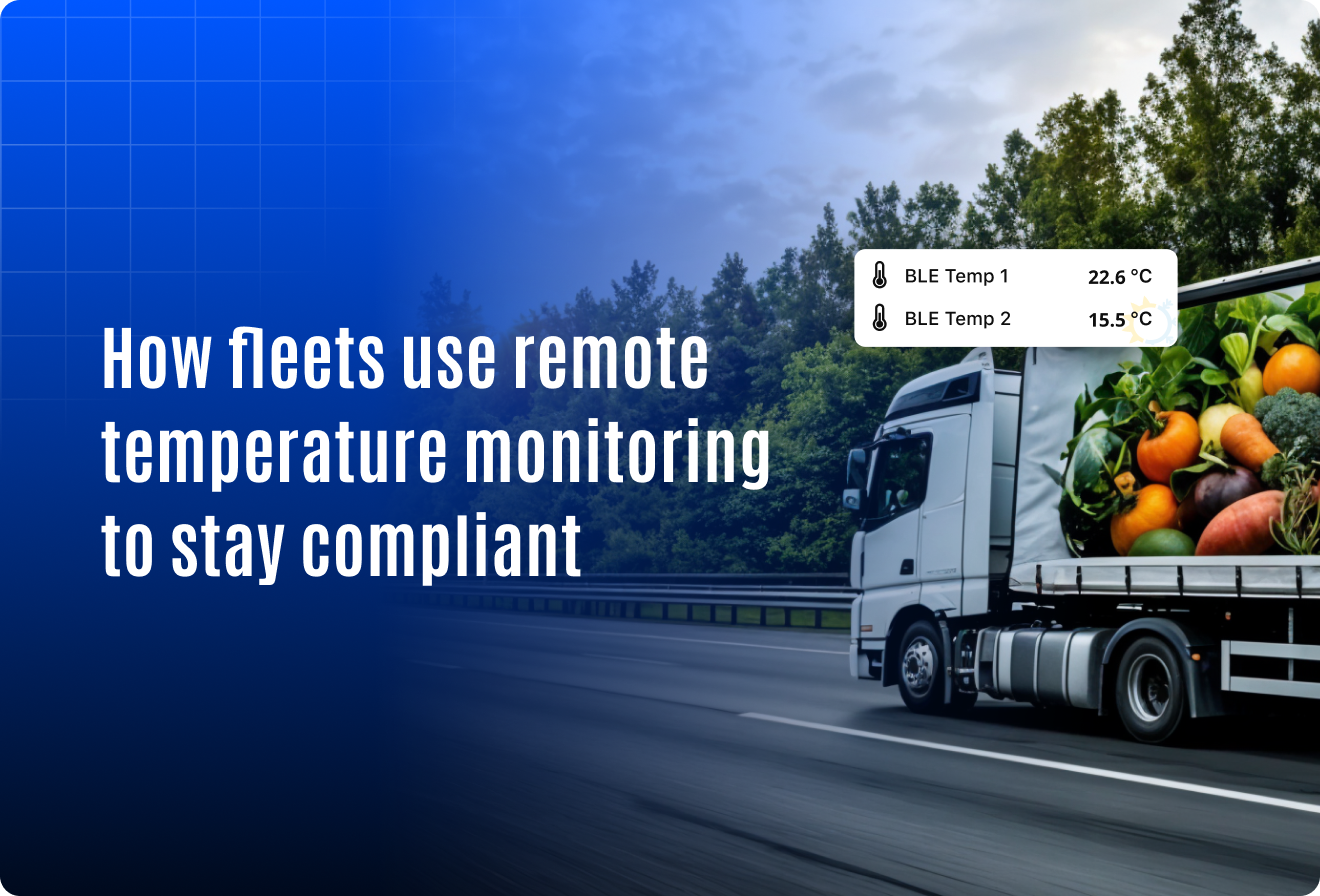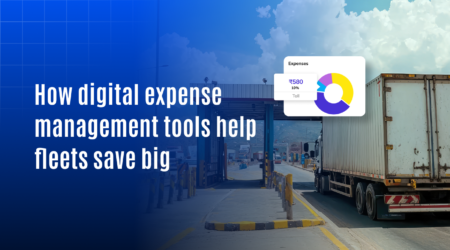How fleets use remote temperature monitoring to stay compliant

Every year, nearly 20% of global temperature-sensitive goods are lost due to supply chain issues. The leading cause is the temperature excursions. The World Health Organization estimates that poor temperature control during transportation and storage causes up to 50% of vaccines to go to waste globally. In the United States, the FDA mandates strict temperature logging for perishable goods, while in the EU, compliance with GDP (Good Distribution Practice) regulations is essential for pharmaceutical logistics.
Whether it’s seafood in Southeast Asia, pharmaceuticals in Europe, or dairy products across North America, fleet operators are under mounting pressure to maintain strict temperature ranges. This helps not just to avoid financial loss, but to comply with ever-tightening regulations. That’s where remote temperature monitoring becomes indispensable.
This blog examines how modern fleets are utilizing remote temperature monitoring to fulfill compliance requirements, mitigate risk, and maintain cargo integrity throughout the journey.
Why compliance matters in temperature-controlled transport
In temperature-sensitive logistics, compliance is not just a checkbox now. It’s a legal and operational necessity. Fleet operators transporting pharmaceuticals, perishable food, or chemicals must adhere to strict regulatory standards to ensure product safety and quality.
In the United States, the Food and Drug Administration (FDA) enforces the Food Safety Modernization Act (FSMA), requiring continuous temperature records for food in transit. In Europe, fleets must comply with Good Distribution Practice (GDP) guidelines, which demand precise temperature control and documentation during the transportation of medicinal products. India’s FSSAI and Canada’s CFIA have similar mandates for the food and pharma industries.
Non-compliance can result in:
- Rejected shipments and product losses
- Legal penalties or license suspensions
- Damaged reputation and lost customer trust
This makes it critical for fleet operators to keep goods within the prescribed temperature range at all times. Moreover, with this, they have a digital trail to support their claim.
What is remote temperature monitoring?
Remote temperature monitoring is a technology-enabled system that helps fleets continuously track and manage the temperature of cargo in real time, from dispatch to delivery.
Using a combination of temperature sensors, GPS tracking devices, and cloud-based software, this system collects live data and sends it directly to fleet managers. If the cargo temperature moves outside the allowed range, the system immediately triggers alerts. This allows teams to take corrective action before a compliance breach or product spoilage occurs.
By replacing manual checks and paper logs with real-time visibility, remote temperature monitoring gives fleets the confidence to meet safety standards consistently and efficiently.
Challenges faced without remote monitoring
Before the adoption of remote temperature monitoring, fleets relying on manual checks or basic data loggers faced multiple operational and compliance risks:
- No real-time visibility: Fleets have no idea if temperatures deviate mid-transit until delivery is completed, when it’s too late.
- Human errors in manual logs: Paper logs are often missed, falsified, or inaccurately recorded, leading to failed audits.
- Delayed response to temperature excursions: Without instant alerts, any fluctuation goes unnoticed, increasing the risk of spoilage.
- Lack of audit readiness: Without digital reports, proving compliance during inspections becomes a manual and time-consuming process.
- Inability to track multi-zone shipments: Complex cargo with varying temperature needs (like frozen and chilled goods together) is difficult to manage manually.
How remote temperature monitoring solves these issues
Modern fleets use remote temperature monitoring not just for automation, but for staying compliant, efficient, and accountable. Here’s how the system addresses key pain points:
- Live temperature tracking: Managers can see current temperatures of all shipments — from any location, at any time.
- Instant alerts: Real-time notifications help take corrective actions immediately when temperatures go out of range.
- Automated digital records: Every trip has an accurate, time-stamped temperature log, making audits seamless and transparent.
- Multi-zone monitoring: Sensors installed in different compartments allow operators to manage varying storage needs with precision.
- Geo-linked data: Temperature fluctuations can be linked to specific route segments, helping diagnose recurring issues.
- System integrations: The data can be integrated with compliance platforms or customer portals to maintain transparency.
Benefits beyond compliance
Remote temperature monitoring is not just about avoiding penalties; it creates value across the fleet operation:
- Reduced product loss: Save thousands by preventing temperature-related cargo damage.
- Faster issue resolution: Drivers and managers can respond immediately to problems, reducing downtime.
- Better brand trust: Consistent delivery of safe, fresh, and compliant goods improves customer satisfaction.
- Insurance advantages: Verified digital logs support claims and reduce disputes with insurers.
- Lower operational costs: Optimized reefer usage helps reduce fuel consumption and maintenance.
Conclusion
In today’s regulated and customer-conscious environment, remote temperature monitoring is more than a feature. Fleet operators must maintain temperature integrity from start to finish when transporting everything from pharmaceuticals to perishable products.
With real-time tracking, automated compliance reports, and instant alerts, remote temperature monitoring offers the visibility and control fleets need to stay compliant and competitive.




